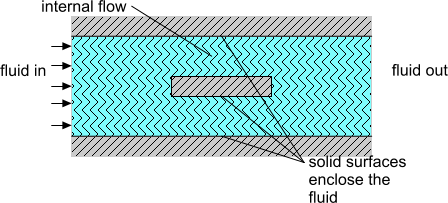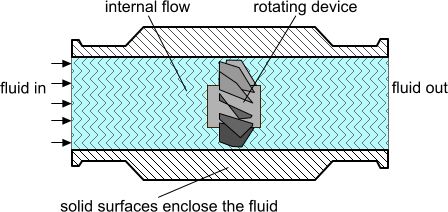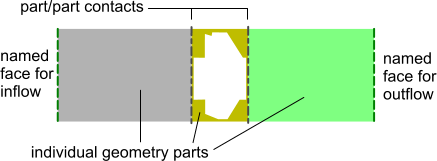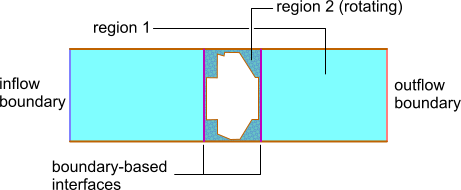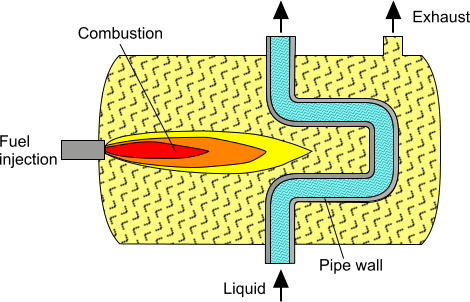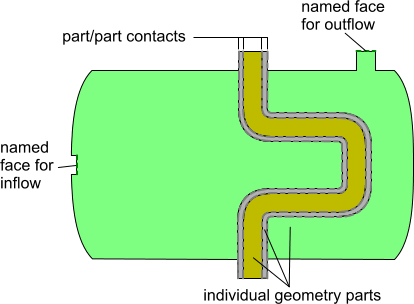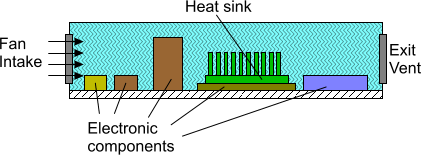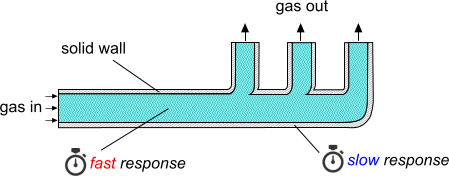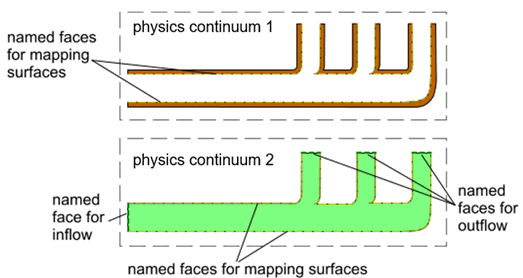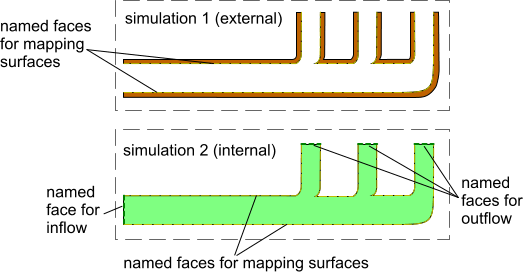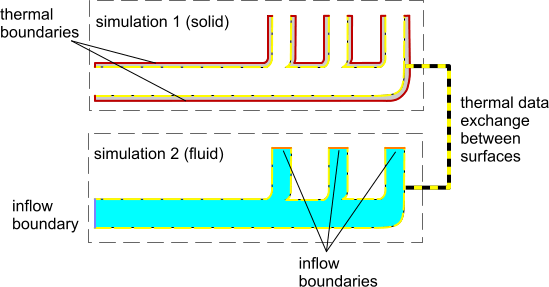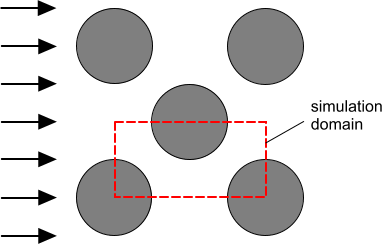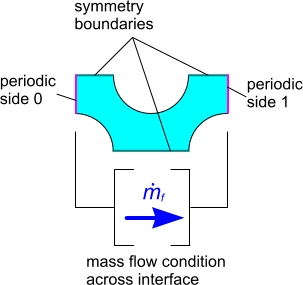Simulation Categories
Before starting a simulation project in Simcenter STAR-CCM+, decide how many regions you require to simulate the engineering scenario, and how those regions connect. For some scenarios, you are best to have two simulations that connect through the co-simulation framework.
To decide which simulation category applies in your analysis, prepare a sketch that identifies the materials, physics, and conditions that are present in the real situation. Then, scan the engineering examples in the sections below to identify one that is similar to your analysis. As a general rule for optimal performance, choose the layout that minimises the number of regions, boundaries, and interfaces in the simulation.
- Single Material with Same Physics Throughout
- For a flow of a single fluid, or heat conduction through a single solid, you require only one geometry part that maps to one region.
- Single Material with Modified Physics in Specific Locations
- In this class of problems, some additional physics models are applied to specific areas or volumes within the simulation domain. Typical examples are moving parts and porous media. These sections must have their own region in which the additional physics applies. The same continuum applies to all regions within the domain.
- Multiple Connected Materials (Low Number of Parts)
- When you want to model heat passing through a combination of fluid and solid materials, you must prepare for interfaces between solid and fluid regions. If the number of parts is low, you can use boundary-based interfaces where one pair of boundaries are matched per interface.
- Multiple Connected Materials (Medium to High Number of Parts)
- When you are modeling a scenario that contains multiple materials in contact, such as heat transfer across a high number of parts in contact with the same fluid, you can create interfaces based on part contacts rather than regions. This approach gives significant performance benefits as the overall number of interfaces is low.
- Simulations with Multiple Timescales or Incompatible Phenomena (Multiple Physics Continua Method)
- In Simcenter STAR-CCM+, you can simulate multiple physics within a single simulation using multiple physics continua. If the phenomena have similar time scales, Simcenter STAR-CCM+ can solve all physics simultaneously using the same time-step. During the simulation, the continua exchange solution data across shared interfaces.
To simulate phenomena with different time scales (for example, the time scales of thermal conduction are different in fluids and solids), you can couple physics continua using simulation operations. Simulation operations automate the process for solving different physics sequentially and mapping the solution data between the continua.
This approach is generally suitable for all simulations with continua that can not exchange data through interfaces (for example, continua that support different mesh types or have incompatible physics).
- Simulations with Multiple Timescales or Incompatible Phenomena (Co-Simulation Method)
- For scenarios where different solver techniques are required in one part of the scenario or coupling with external software is required, Simcenter STAR-CCM+ offers the co-simulation method. In this method, you define two separate simulations, each with their own region-level layouts, and configure the simulations to exchange data with each other during runtime.
- Repeating Geometries and Cyclic Conditions
- In some scenarios, repeating flow patterns are observed across similar geometries, or along a tube. In these situations, you can simplify the problem definition by modeling only part of the scenario and applying a periodic interface across two surfaces on which you expect to see identical flow profiles.
